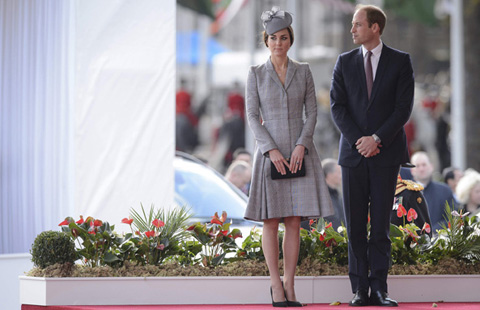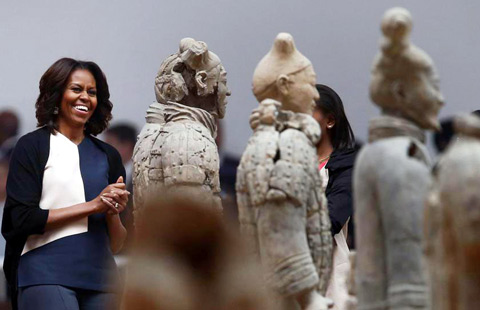Treasured Chinese scroll may be missing from estate
Updated: 2014-10-21 06:45
By PAUL WELITZKIN in New York(China Daily USA)
|
||||||||
A family dispute over the estate of a noted Chinese art collector has raised questions about an ancient Chinese hand scroll that is considered a national treasure in China and is apparently missing.
For more than a decade the family of C.C. Wang has been in a legal dispute over his collection of classical Chinese scrolls and paintings, according to a recent report in the New York Times. Wang, an accomplished artist who became a New York City resident in 1949, began collecting paintings in Shanghai more than 70 years ago. His collection is considered one of the best in the world.
Recently, two of Wang's children filed lawsuits against each other that include accusations of looting and deceit. According to the Times and court papers, over $60 million worth of art is missing from the estate, including an 11th-century ink-on-silk scroll - The Procession of Taoist Immortals.
“The loss of such an iconic work is a tragedy, much more so than losing a valuable work by an artist such as Picasso or Renoir whose output was prodigious, because so few important early master works from this period in China exist,’’ Lark Mason, the author of articles on Asian art and an appraiser for the PBS series Antiques Roadshow, said in an e-mail to China Daily. He values the work at tens of millions of dollars.
“The loss of the Bayeux Tapestry, one of the few surviving and intact works depicting the Norman Conquest of Britain or Rembrandts Night Watch, gives an approximation of the importance of The Procession of Taoist Immortals. This is a sad situation all around," wrote Mason.
Stephen Allee, the associate curator of Chinese painting and calligraphy at the Freer Gallery of Art and Arthur M. Sackler Gallery at the Smithsonian Institution in Washington, said the scroll probably was done in the early to mid-11th century.
“It’s the earliest example of its kind, “Allee told China Daily in an interview. “It probably was intended as a draft for a mural. It is unsigned so we are not sure who the original artist is. However, a colophon (a note about the work) that was attached to the scroll in 1304 identified the artist as Wu Zongyuan and he was known as an 11th century muralist.”
Allee said The Procession of Taoist Immortals shows a procession of Taoist gods. “It is a very imposing – it measures about seven meters (306 inches) long, “ Allee said.
Because it is a hand scroll, Alee believes the work is probably still in pretty good condition. “Hand scrolls roll up so assuming it has remained in a proper environment, I don’t think we have to worry about degradation,“ he added.
Just as Christianity influenced the development of the arts in the West, Taoism, a Chinese philosophy and religion that dates from the 2ndcentury AD, left a strong mark on Chinese art and literature.
paulwelitzkin@chinadailyusa.com

 Healthcare workers attend Ebola educational session in NY
Healthcare workers attend Ebola educational session in NY
 Kate makes first public appearance after pregnancy
Kate makes first public appearance after pregnancy
 Chinese may go after California high-speed rail project
Chinese may go after California high-speed rail project
 Terracotta warriors attract celebrities around the world
Terracotta warriors attract celebrities around the world
 US-China solar pact holds big potential: Analyst
US-China solar pact holds big potential: Analyst
 Top 10 richest women in China
Top 10 richest women in China
 Yang Jiechi meets with US National Security Advisor
Yang Jiechi meets with US National Security Advisor
 Chinese power couple's art on display at UN
Chinese power couple's art on display at UN
Most Viewed
Editor's Picks

|

|

|

|

|

|
Today's Top News
US-China solar pact holds big potential
Li upbeat despite economic slowdown
Report: Mobile advertising on a roll
Students warned of online encounters
Chinese may go after California high-speed rail project
China to fund non-profit art performance
US, China co-op to train future Afghani diplomats
Priceless Chinese scroll may be gone
US Weekly

|

|






